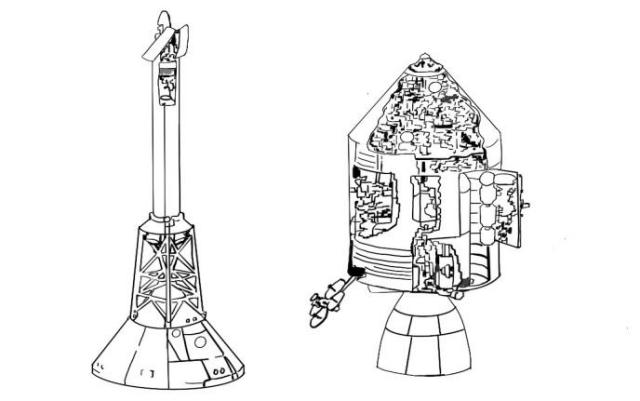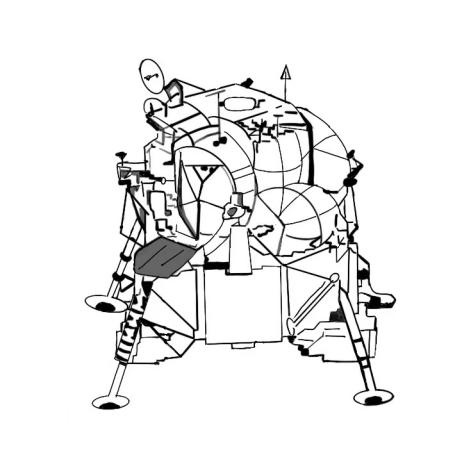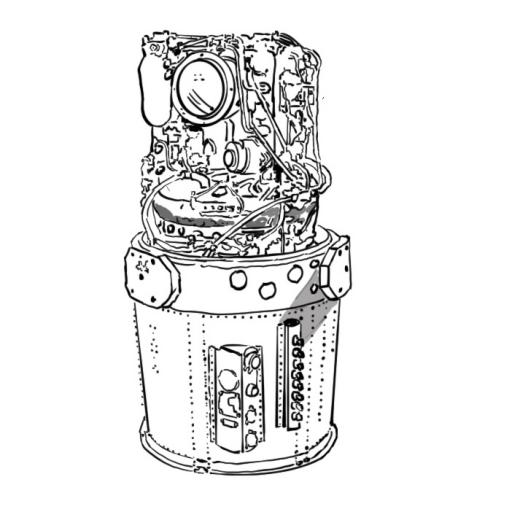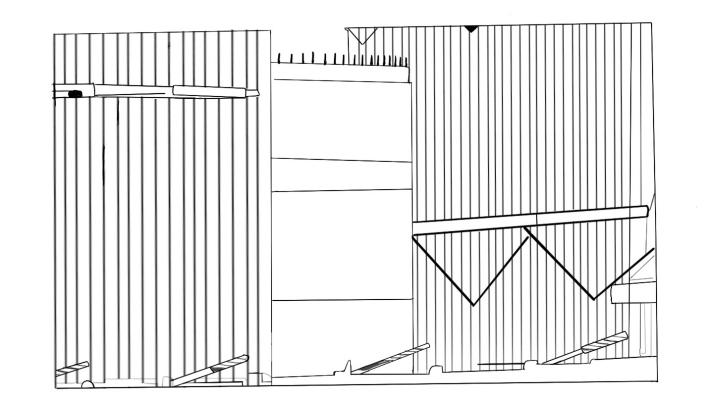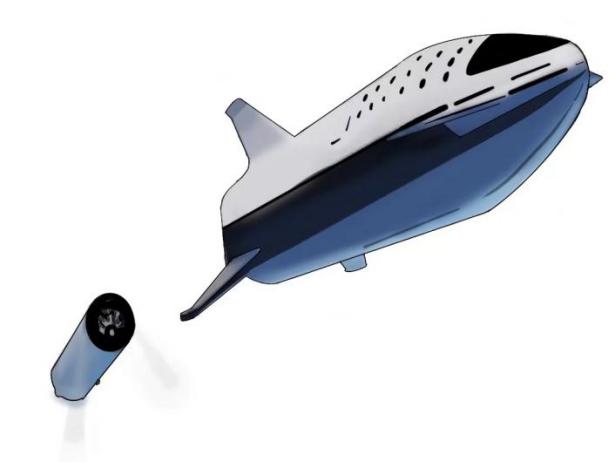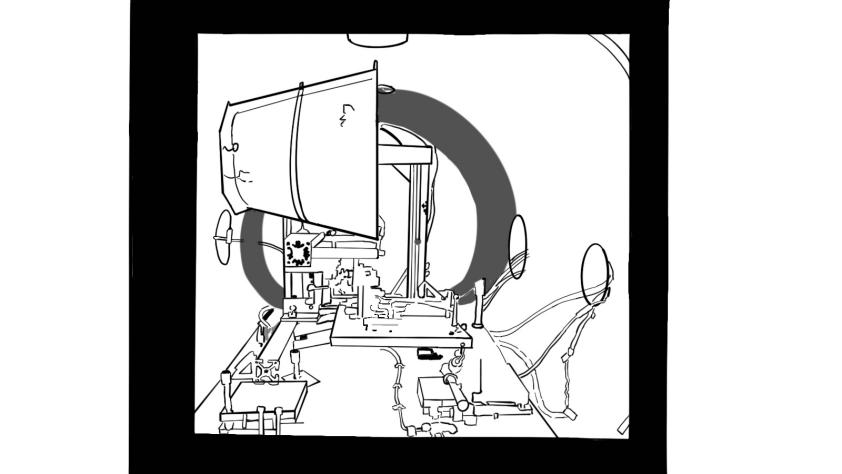1. Introduction
The Earth is the cradle of Humanity. However, one does not always live in the cradle.
- Konstantin Tsiolkovsky
Since the beginning of human civilization, our ancestors have gazed at the night sky. They aspired if they could fly up there and uncover the underlying mysteries behind shimmering starlight. However, no one could propose a feasible solution until the 1600s when Sir Issac Newton published his laws of motion and the theory of universal gravitation. In his well-known book Principia, Newton successfully revealed the nature of gravity & laid down the theoretical foundation of spaceflight. In 1903, the eminent Russian physicist Konstantin Tsiolkovsky took a further step and formulated the profound ideal rocket equation, depicting that to get into space, we could eject mass at the end of the spacecraft. Nevertheless, not until 1926 the first functional rocket was built by Robert H. Goddard, powered by gasoline and liquid hydrogen.
It turns out that there are so many incredible things behind the starry sky. People come to explore and move forward in the torrent of the universe, leaving a deep and shallow imprint on the long river of history. Middle and late 20th century, the development of the spacecraft made a significant breakthrough. Moreover, history changed on October 4, 1957. The Soviet Union successfully launched Sputnik 1. The size of the world's first artificial satellite may not be as big as many people think. It is about the size of a beach ball (58 cm in diameter) and weighs only 83.6 kg. It took about 98 minutes to orbit the earth in an elliptical orbit [1]. The launch of the satellite, assembled from two hemispheres sealed with o-rings and joined by 36 bolts [2], covered with a highly polished 1mm thick heat shield and carrying two antennas, is a massive breakthrough in science and technology [3]. The distant universe seems to be closer to us. After that, Sputnik 2 and Sputnik 3 were launched. Sputnik became the common Western name for Soviet satellites, which were also used to test the human-crewed Vostok spacecraft before Yuri Gagarin's flight. Yuri Gagarin's flight was another breakthrough in spacecraft development in the mid-to-late 20th century. On April 12, 1961, cosmonaut Yuri Gagarin went into space aboard Vostok I, becoming the first human in space. The voyage began at 9:07 a.m. Moscow time circled the Earth once, lasted 1 hour and 29 minutes, and ended in the Soviet Union at 10:55 a.m. He returned safely to Earth.
The first human into space is undoubtedly significant progress in the exploration of the universe; a human-crewed moon landing will be significant progress and is also a new starting point. "... One small step for man, one giant leap for mankind." On July 20, 1969, an estimated 650 million people watched and listened to television images of Apollo 11 Commander Lance Armstrong. The primary goal of Apollo 11 was to accomplish the national goal set by President John F. Kennedy on May 25, 1961: to perform a human-crewed lunar landing and return to Earth. Other flight objectives included scientific exploration by the lunar module or LM crew; Deploying television cameras to transmit signals to Earth; A solar wind composition experiment, a seismic experiment package, and a laser ranging backward reflector [4]. In this introduction to the history of spacecraft development, another project must be mentioned in the mid to late 20th century -- the first space shuttle. In the early hours of April 12, 1981, two astronauts strapped into their seats on the flight deck of Columbia and set off for the first of a new class of spacecraft, the Space Shuttle. The first shuttle mission showcased a range of cutting-edge technologies, from innovative shuttle main engines to tiles designed to prevent overheating to advanced digital telex controls and computer systems adopted by many commercial aircraft. The shuttle has flown more than a hundred times since STS-1 [5].
The universe is ever-changing, and interstellar matter may be destroyed, born, or collided, or something else is going on. The same is true for the journey of exploration and development. In the course of spacecraft development, there have been exciting moments, as well as stumbles with grief, regret, and unwillingness.
There are some accidents under the development of spacecraft. For example, the challenger's explosion on 28 January 1986 caused a devastating end to the 10th mission of the spacecraft 73 seconds after the launch. This disaster is declared as a result of two rubber O-ring failures due to the cold in the morning.
Another accident is Apollo 12. Apollo 12 began taking off on 14 November 1969 and received two different lighting strikes. Then, when Apollo 12 jumped into the sea, a strong wave of force hit the head of astronaut Alan Bean, causing a 1-inch cut. Luckily, Alan was treated so well that he was okay then.
In trials and failures, human beings find their way into the vast universe by listening to the sound of the hourglass of time. However, human exploration will not stop there. After that, Space X came out, the Artemis plan was confirmed, breakthroughs in solar sail technology were made, and so on. The above is a brief introduction to the general development process of spacecraft. The primary power sources of spacecraft are Solar, nuclear, fuel cells, and batteries [6]. The power source development and specific evolution process of spacecraft will be reflected in detail in the text.
2. Orbital spacecraft
The orbital spaceship is the generic name for a large terrace passenger ship. In general, orbital spacecraft is almost the same as modern aircraft, but it can reach escape speed to escape the planet. The orbiting spacecraft takes off at the right angle, but the aircraft always takes off horizontally.
There are also some early examples of this kind of spacecraft, like the Soyuz spacecraft from Russia. And consists of its capsule and rocket. Soyuz spacecraft can also carry three people with their food and water.
Another example is the SpaceX dragon launched by spec (27 May 2022 American private space transport company).
The Soyuz is powered by solar energy. Soyuz spacecraft weigh 7 tons; they have a length of 7.2 m and a diameter of 2.7 m. The solar panels are on (they remain off during launch), and the Soyuz has a width of 10.6 m [7].
Solar energy is energy from the sun. Spacecraft satellites orbiting Earth are close enough to the sun that they can often use solar energy. These spacecraft have solar panels that convert the sun's energy into electricity to power the spacecraft, and Sputnik 1 is one of them. Electricity from the solar panels charges the batteries in the spacecraft, which in this case, can power the spacecraft even when it is far from direct sunlight. NASA's Mars Exploration Rover, Spirit and Opportunity, and Mars' Phoenix lander use electricity from solar panels, as does the Insight lander. Spacecraft farther from the sun need substantial solar panels to get the power they need. For example, NASA's Juno spacecraft has been using solar power on Jupiter, and each of its three solar panels is 30 feet (9 meters) long.
Nevertheless, solar energy sources still have certain limitations and are unsuitable for all spacecraft. Despite solar panels, spacecraft powered by solar energy cannot be separated from the sun. The solar energy source cannot provide sufficient power support for space exploration with longer voyages. When the spacecraft gets farther and farther from the sun, solar energy efficiency will be reduced accordingly. Again, this could affect the spacecraft's work in dark environments [8]. Neither Soyuz rockets nor Soyuz vehicles can be reused.
SuperDracos is used in the SpaceX Dragon 2 crew capsule and DragonFly, a low-altitude reusable prototype rocket used to test various aspects of propulsion landing technology. The SuperDraco rocket engine uses a storable (non-cryogenic) self-igniting propellant, allowing the engine to fire months after refueling and launch. They combine the functions of the reaction control system and the main propulsion engine. Self-igniting fuels do not require an external ignition source, thereby increasing the reliability of the spacecraft [9].
In the future, there may be types of spacecraft, such as reusable and spacecraft. Likewise, the sources of power for spacecraft are constantly evolving.
3. Interplanetary spaceships
After several successful human-crewed orbital spaceflights in the early 1960s, human ambitions did not end in Earth orbit -- engineers and scientists turned their attention to other planets. Their moons and various moons in the solar system. However, as the distance between destinations increases, spacecraft engineers face a severe technical challenge. A more efficient, more energetic power source is needed for space travel between planets. Moreover, to overcome future challenges, engineers must optimize spacecraft designs to handle increased payloads, and protect crews and instruments and potential threats. This section focuses on interplanetary spacecraft propulsion and other technological developments using two notable examples.
3.1. Apollo program
The Apollo program was the first successful attempt at human-crewed interplanetary space flight. It was first addressed by US President John F. Kennedy during a famous rally at Rice University in 1961. Several technical evaluations have started earlier [10].
After the unmanned flight test was completed, Apollo 4 and Apollo 8 carried three successful astronauts to the moon orbit and brought them back to earth. In July 1969, Neil Armstrong and Edwin Aldrin became the first astronauts of the moon; there was a historic moon landing. The whole program succeeded in December 1972, when Apollo 17 returned to earth with three astronauts along with a 243-pound sample taken on the moon [11].
|
Figure 1. Cross-sectional schematic of Apollo Command and service module. |
Before discussing the source of power, here is a brief introduction to the structure of Apollo 11. The Apollo spacecraft can be briefly divided into three major sections: the command module, the service module (often abbreviated as CSM), and the lunar module (LM). During the whole mission, the command and service module was accountable for ensuring the safety of the onboard crew, providing precise navigation between the Moon and Earth, and maintaining regular communication with the control center back on Earth. The command module was where astronauts stayed for the most part during the whole journey to the Moon. The bottom of the command module was a heat shield. Made of honeycomb-shaped stainless steel containing phenolic epoxy resin, its primary mission was to protect the crew from extreme heat caused by friction between Earth's atmosphere during re-entry. The top of the module situates the docking adaptor with the lunar module and parachutes, providing critical deceleration when Apollo returned to Earth. Here the crew compartment was in the center of the spaceship. The astronaut could monitor and control the spaceship and onboard equipment and communicate with the control center on Earth. Finally, the aft compartment was located just behind the seat for the crew. All the electrical wires and tubes onboard could be found there.
|
Figure 2. Exterior of Apollo lunar module. |
|
Figure 3. The fuel cell in Apollo 11. |
Apollo 11 used fuel cells as a power source. The service module, connected to the bottom of the command module, contained most of the propulsion, power, and communication systems. A liquid-fuel-powered rocket engine mounted at the bottom provided the spaceship a maximum thrust of 91 kN. Meanwhile, four RCS (Reaction control system) motors on the side of the service module adjusted the attitude of a spaceship. Electricity was produced by three hydrogen fuel cells located on the top, each capable of delivering an e.m.f of 28 volts. Fuel for fuel cells and propulsion systems was stored in pressurized tanks in the center of the service module [12]. Fuel cells are devices that generate electricity through an electrochemical reaction between hydrogen and oxygen. Apollo 11 had three hydrogen fuel cells. Apollo 11's hydrogen fuel cells produced up to 2,300 watts of power per unit, powering countless pieces of equipment in the spacecraft and generating electricity providing the astronauts with most of their water needs.
Hydrogen fuel cells are more suitable than other energy sources in space. Their ability to generate electricity, water, and oxygen on demand by facilitating the circulation of resources is their great advantage. By storing hydrogen gas and solar panels on the spacecraft to generate electricity before leaving space, any necessary elements can be produced directly on the spacecraft anywhere in space. For example, hydrogen and oxygen can be injected into a fuel cell to generate electricity and water, and the electricity generated by the fuel cell can also split water. Hydrogen fuel cells are used to utilize a limited amount of resources efficiently and also to deal with emergencies [13].
The lunar module of the Apollo spacecraft was responsible of bringing the crew onto the lunar surface and returning to the CSM securely. It comprised two stages: ascent and descent stage. Inside the descent stage, the single landing rocket motor helped the lunar module to decelerate during the landing on the lunar surface. As the lunar module was about to touch the surface, four landing gears mounted on the descent stage contracted and provided stable support for the module. At the same time, the storage compartment held essential equipment for conducting scientific research. The ascent stage was the module where astronauts stayed during the landing. It also had a rocket and a set of RCS motors installed to depart from the Moon and return to the CSM. Three VHF and one S-band radio antenna were also included to maintain communication between astronauts, the CSM, and the control center. The Apollo guidance computer, onboard radars, and inertial navigation systems, assisted the lunar module in finding its way to the moon and back to CSM [14].
3.2. SpaceX starships
The Starship series spacecraft is manufactured and operated by SpaceX, a USA technological enterprise focusing on commercial spaceflights. The Starship spacecraft aims to transport passengers and cargo from Earth to the Moon, Mars, and beyond, while it is also capable of Earth orbital operations. This spacecraft is designed to contain two stages. The lower stage, known as the Superheavy, consists of a set of Raptor rocket engines powered by liquid methane and oxygen. Its primary mission is to carry the Starship into Earth orbit. Once completed, Superheavy disconnects to Starship and returns to the launchpad. Engineers inspect the booster for potential damages and prepare it for the next launch [15, 16].
|
Figure 4. Installing Starship 20 onto Superheavy Booster 4 in Aug. 2021. |
|
Figure 5. Heat shield under test in a SpaceX factory located in Boca Chica, Texas, US. |
Above the Superheavy Booster is the Starship itself. Starship spaceship is 69 meters tall and 9 meters wide, and its functional payload capacity ranges between 100 to 150 metric tons, depending on the destination. Starship involves an integrated passenger and cargo compartment; it is also eligible to carry them into Earth orbit, interplanetary missions, and even destinations on Earth [17]. Unlike its predecessors, The Starship is designed for multiple spaceflights before an overhaul or retirement. To cope with this unique demand, Starship utilizes a new hexagonal ceramic heat shield that can endure temperatures up to around 1400℃ during atmospheric re-entry. In addition, SpaceX engineers plan to install transpiration cooling systems in Starship to reduce cooling stress [18]. Consequently, the new heat shield, along with other technologies, can reduce the operational costs of Starship and prolong its lifespan.
|
Figure 6. Illustration showing Starship in flight. |
Currently, the Starship series spaceship is still under development and has not begun commercial operation yet. The first successful technical evaluation was conducted in 2019 by Starhopper -- a reduced Starship model used to test the Raptor engine [19]. It completed several low-altitude flight (hop) tests with a single engine [20]. Then the first prototype, Starship Mk1, completed manufacturing in October 2019 but exploded during a cryogenic test in the subsequent month [21]. The first successful complete flight test occurred in May 2021 when Starship SN15 safely landed on the launchpad after rising to 10 kilometers [16]. The first maiden flight 'dearMoon project’ is expected to commence in 2023. dear Moon is an initiative proposed in 2018 by Japanese entrepreneur Yusaku Maezawa to carry 6-8 artists for a lunar flight [22].
4. Interstellar spaceflight – feasibility & challenge
4.1. Possibilities and difficulties of interstellar travel
Shuttling between the galaxies, with spacecraft as trains, with each celestial body as a station, in planetary exploration, do not know how many people have more than interstellar exploration hopes. Is interstellar travel possible? Before answering this question, we had better have some concrete understanding of the concept of interstellar travel. Interstellar travel is the term used to assume manned or unmanned travel between the stars. Interstellar travel will be much more complex than interstellar space flight; Planets in our solar system are less than 30 astronomical units (AU) apart, while stars are usually hundreds of thousands of astronomical units apart expressed in light years. Because of these great distances, interstellar travel requires either a high proportion of the speed of light or a very long travel time lasting decades to thousands of years or more [23]. Now back to the problem. The answer is yes. NASA's Pioneer missions, Voyager missions, and, most recently, New Horizons have all begun their long journeys outward. Voyager in particular, is now thought to lie outside the solar system, defined as the region where the solar wind emanating from the sun gives way to the general galactic background of particles and dust (Paul Sutter). In this case, we may be able to say that we have achieved interstellar travel, but in reality, it is still a long way from the interstellar travel we expect. The ship had no destination and could not return. When the thrusters fail, they become just another piece of space junk. This is undoubtedly not the interstellar travel we were expecting.
In order to make interstellar spaceflight more plausible, probes have to go very fast. At least one-tenth the speed of light. Reaching these speeds requires much energy. One option is to include the energy on the spacecraft as fuel. However, if that is the case, the extra fuel adds mass, making it harder to propel it to those speeds. To solve this problem, spacecraft propulsion can be an essential part. This is another major problem in the development of power sources. Using nuclear energy for propulsion appears to be an efficient way. Nuclear pulse propulsion, nuclear thermal propulsion (NTP), and nuclear electric propulsion (NEP) are three forms of propulsion. Nuclear pulse propulsion is a theoretical method of spacecraft propulsion that uses a nuclear explosion as thrust [24]. In NTP, a nuclear fission reactor heats a liquid propellant, such as hydrogen. In the NEP, the thrust is lower but sustained, the fuel efficiency is much higher, and the speed is faster than conventional chemical rockets [25], potentially taking more than 60% less time to reach Mars. Nuclear propulsion can help humans explore the farther universe, but it is still not enough to allow us to travel between stars.
Solar sails use the pressure exerted by sunlight to propel a spacecraft through space. Existing reflective solar sail designs are often huge and thin and are limited by the direction of sunlight, forcing a trade-off between power and navigation. Diffractive light sails would use small gratings embedded in thin films to take advantage of a property of light called diffraction, which causes light to spread out as it passes through a narrow opening. This would allow the spacecraft to use sunlight more efficiently without sacrificing maneuverability. Solar pressure propulsion is an entirely new form of propulsion, and solar sail spacecraft is currently the only spacecraft that can take humans to extrasolar galaxies [26]. The fastest and most efficient means of propulsion is ion propulsion. NASA is preparing to equip some of its most crucial deep space missions with ion engines that can propel spacecraft using fast-charged particles accelerating to 90,000 miles per hour. The NASA Evolutionary Xenon Thruster (NEXT) project, managed by NASA Glenn Research Center, has completed a test that powered the ion engine for more than 48,000 hours, consuming 860 kilograms of xenon propellant [27]. Ion propulsion requires less propellant and is faster than chemically fueled rockets.
4.2. Potential technological
The underlying technology EmDrive is a hypothetical solution to the difficulties mentioned in the previous section, that spacecraft require highly high operating speeds and large amounts of energy to support their operations.
|
Figure 7. The NASA Eagleworks EmDrive sits inside a test chamber. |
EmDrive is an engine that produces thrust without fuel. The propulsion device appears to violate the law of conservation of momentum. Scientists at NASA's Eagleworks Laboratory have been building and testing something like this. The physics-defying device, called an EmDrive, ostensibly generates thrust by simply bouncing microwaves inside a closed, cone-shaped cavity without the need for fuel (Nadia Drake). Not only NASA but many other research institutions have also conducted related experiments. According to the experimental results, Em Drive is still just a hypothetical rocket.
Warp drive is another hypothesis. General relativity describes how mass and energy warp space-time—massive objects like stars and black holes bend space-time around them. This curvature is how you feel about gravity and is why many aerospace heroes worry about "sinking" or "falling into" a gravity well. What if a starship could compress the space in front of it while expanding the space-time behind it? Star Trek took this idea and named it the warp drive [28]. In theory, curvature actuation seems feasible, but there are many problems and challenges in putting it into practice. In any case, with the continuous development of science, many seemingly impossible things are also possible.
5. Conclusion
By methods of literature collection, data integration, and comparative analysis, this paper discusses spacecraft development from 1960 to the 21st century. Our work combines diagrams to show the evolution of low-Earth orbit vehicles, planetary vehicles, and sources of power for interstellar travel, as well as details of the evolution of specific spacecraft structures. In the part of low Earth orbit spacecraft, we take the Soyuz spacecraft and SpaceX Dragon as examples and briefly introduce low Earth orbit spacecraft, focusing on solar energy and other sources of spacecraft power. In part about planetary spacecraft, we take Apollo 11, Space X, and other spacecraft as examples, specifically introduce their power sources and specific structure and function and discuss the evolution process of the spacecraft in detail. At the same time, in the interstellar travel section, we also discuss the possibility of future development of interstellar travel and practical difficulties such as power problems. At the same time, we show the future development direction of spacecraft power sources. Solar sail technology has made significant progress, but it is still in the research stage. The idea of interstellar travel with nuclear power also has limitations. EM Drive and Warp Drive are assumed to be powered enough to support interstellar travel, but they are still hypothetical.
In conclusion, it can be concluded that the spacecraft's power source is from relatively low energy and efficiency to more incredible energy and higher efficiency. The spacecraft's structure only supports spacecraft exploration to realize the trend of the manned voyage. At the same time, the spacecraft is also developing in the direction of higher performance and safety factors. Therefore, there are multiple possibilities for developing spacecraft power sources and structures.
References
[1]. NASA | History - Sputnik. (2022). Retrieved 4 September 2022, from https://history.nasa.gov/sputnik.html
[2]. Didlake, R., & Odinets, O. (2022). ARRLWeb: Sputnik and Amateur Radio. Retrieved 4 September 2022, from https://web.archive.org/web/20071011045828/http://www.arrl.org/news/features/2007/09/28/03/?nc=1
[3]. A, W. (2022). Shooting The Moon. Retrieved 4 September 2022, from https://www.americanheritage.com/shooting-moon
[4]. Apollo 11 Mission Overview. (2022). Retrieved 4 September 2022, from https://www.nasa.gov/mission_pages/apollo/missions/apollo11.html
[5]. Okolski, G. (2022). STS-1 History. Retrieved 4 September 2022, from https://history.nasa.gov/sts1/history.html
[6]. Johnson, B. (2022). Power Sources for Space Exploration. Retrieved 4 September 2022, from http://large.stanford.edu/courses/2012/ph240/johnson1/
[7]. The Russian Soyuz spacecraft. (2022). Retrieved 4 September 2022, from https://www.esa.int/Enabling_Support/Space_Transportation/Launch_vehicles/The_Russian_Soyuz_spacecraft
[8]. What Powers a Spacecraft? | NASA Space Place – NASA Science for Kids. (2022). Retrieved 4 September 2022, from https://spaceplace.nasa.gov/what-powers-a-spacecraft/en/
[9]. Clark, John. Ignition! An Informal History of Liquid Rocket Propellants. Rutgers University Press. pp. 214–220. ISBN 978-0-8135-0725-5.
[10]. Ertel, I. D., & Mary, L. M. (2007). The Apollo Spacecraft - A Chronology. Vol. 1. Retrieved from National Aeronautics and Space Administration: https://www.hq.nasa.gov/office/pao/History/SP-4009/contents.htm#Volume%20I
[11]. National Space & Air Museum, Smithsonian Institution. (2019, 7 15). A Brief History of the Apollo Program. Retrieved from Smithsonian Institution: https://www.si.edu/newsdesk/factsheets/brief-history-apollo-program
[12]. NASA. (n.d.). Apollo 11 Command and Service Module (CSM). Retrieved from NASA Space Science Coordinated Archive: https://nssdc.gsfc.nasa.gov/nmc/spacecraft/display.action?id=1969-059A
[13]. Fuel Cells Launched to the Moon Realized the Dream of Mankind. (2022). Retrieved 4 September 2022, from https://www.hyundaimotorgroup.com/story/CONT0000000000001856
[14]. NASA. (n.d.). Apollo 11 Lunar Module / EASEP. Retrieved from NASA Space Science Data Coordinated Archive: https://nssdc.gsfc.nasa.gov/nmc/spacecraft/display.action?id=1969-059C
[15]. Wall, M. (2012, 9 12). JFK's 'Moon Speech' Still Resonates 50 Years Later. Retrieved from SPACE.com: https://www.space.com/17547-jfk-moon-speech-50years-anniversary.htm
[16]. Space Exploration Technologies Corp. (2021, 5 5). Starship SN15 flight test. Retrieved from SpaceX: https://www.spacex.com/launches/starship-sn15-flight-test/
[17]. Space Exploration Technologies Corps. (n.d.). Starship. Retrieved from SpaceX: https://www.spacex.com/vehicles/starship/
[18]. Tarlik, M. (2019, 3 23). SpaceX's Hexagon Tiles for Starship Heat Shield Pass Fiery Test. Retrieved from SPACE.com: https://www.space.com/spacex-starship-hexagon-heat-shield-tile-test.html
[19]. Ali, I. (2021, 8 27). From Starhopper to SN20, a brief timeline of the SpaceX Starship development. Retrieved from Tesla Oracle: https://www.teslaoracle.com/2021/08/27/from-starhopper-to-sn20-a-brief-timeline-of-the-spacex-starship-development/
[20]. Arevalo, E. J. (2019, 11 24). SpaceX Starship Timeline: Making Life Multi-planetary. Retrieved from Tesmanian: https://www.tesmanian.com/blogs/tesmanian-blog/spacex-mars-timeline
[21]. Leman, J. (2019, 11 22). SpaceX's Starship Prototype Mk1 Blows Its Top During Cryogenic Pressure Test. Retrieved from Popular Mechanics: https://www.popularmechanics.com/space/rockets/a29871777/starship-mk1-explosion/
[22]. Ryan, J. (2021, 2 25). First SpaceX Starship moon passenger teases update on #dearMoon project. Retrieved from CNET: https://www.cnet.com/science/first-spacex-starship-moon-passenger-teases-update-on-dearmoon-project/
[23]. Mauldin, John H. (May 1992). Prospects for interstellar travel. Published for the American Astronautical Society by Univelt. “Interstellar travel.”
[24]. Sutter, P. (2022). Is Interstellar Travel Really Possible? Retrieved 4 September 2022, from https://www.space.com/is-interstellar-travel-possible.html
[25]. Tackett, S. (2022). Nuclear Pulse Propulsion: Gateway to the Stars. Retrieved 4 September 2022, from https://www.ans.org/news/article-1294/nuclear-pulse-propulsion-gateway-to-the-stars/
[26]. Picot, W., 2022. Nuclear Technology Set to Propel and Power Future Space Missions, IAEA Panel Says. [online] Iaea.org. Available at: <https://www.iaea.org/newscenter/news/nuclear-technology-set-to-propel-and-power-future-space-missions-iaea-panel-says> [Accessed 21 September 2022].
[27]. Drake, N. (2022). NASA's 'Impossible' EmDrive Engine Tested—Here Are the Results. Retrieved 4 September 2022, from https://www.nationalgeographic.com/science/article/nasa-emdrive-impossible-physics-independent-tests-magnetic-space-science
[28]. Borunda, M. (2022). Warp drives: Physicists give chances of faster-than-light space travel a boost. Retrieved 4 September 2022, from https://www.space.com/physicists-give-warp-drives-a-boost
Cite this article
Pu,F.;Yang,R.;Wang,Y. (2023). Power Source Evolution: A Brief History of Spaceships. Theoretical and Natural Science,5,119-128.
Data availability
The datasets used and/or analyzed during the current study will be available from the authors upon reasonable request.
Disclaimer/Publisher's Note
The statements, opinions and data contained in all publications are solely those of the individual author(s) and contributor(s) and not of EWA Publishing and/or the editor(s). EWA Publishing and/or the editor(s) disclaim responsibility for any injury to people or property resulting from any ideas, methods, instructions or products referred to in the content.
About volume
Volume title: Proceedings of the 2nd International Conference on Computing Innovation and Applied Physics (CONF-CIAP 2023)
© 2024 by the author(s). Licensee EWA Publishing, Oxford, UK. This article is an open access article distributed under the terms and
conditions of the Creative Commons Attribution (CC BY) license. Authors who
publish this series agree to the following terms:
1. Authors retain copyright and grant the series right of first publication with the work simultaneously licensed under a Creative Commons
Attribution License that allows others to share the work with an acknowledgment of the work's authorship and initial publication in this
series.
2. Authors are able to enter into separate, additional contractual arrangements for the non-exclusive distribution of the series's published
version of the work (e.g., post it to an institutional repository or publish it in a book), with an acknowledgment of its initial
publication in this series.
3. Authors are permitted and encouraged to post their work online (e.g., in institutional repositories or on their website) prior to and
during the submission process, as it can lead to productive exchanges, as well as earlier and greater citation of published work (See
Open access policy for details).
References
[1]. NASA | History - Sputnik. (2022). Retrieved 4 September 2022, from https://history.nasa.gov/sputnik.html
[2]. Didlake, R., & Odinets, O. (2022). ARRLWeb: Sputnik and Amateur Radio. Retrieved 4 September 2022, from https://web.archive.org/web/20071011045828/http://www.arrl.org/news/features/2007/09/28/03/?nc=1
[3]. A, W. (2022). Shooting The Moon. Retrieved 4 September 2022, from https://www.americanheritage.com/shooting-moon
[4]. Apollo 11 Mission Overview. (2022). Retrieved 4 September 2022, from https://www.nasa.gov/mission_pages/apollo/missions/apollo11.html
[5]. Okolski, G. (2022). STS-1 History. Retrieved 4 September 2022, from https://history.nasa.gov/sts1/history.html
[6]. Johnson, B. (2022). Power Sources for Space Exploration. Retrieved 4 September 2022, from http://large.stanford.edu/courses/2012/ph240/johnson1/
[7]. The Russian Soyuz spacecraft. (2022). Retrieved 4 September 2022, from https://www.esa.int/Enabling_Support/Space_Transportation/Launch_vehicles/The_Russian_Soyuz_spacecraft
[8]. What Powers a Spacecraft? | NASA Space Place – NASA Science for Kids. (2022). Retrieved 4 September 2022, from https://spaceplace.nasa.gov/what-powers-a-spacecraft/en/
[9]. Clark, John. Ignition! An Informal History of Liquid Rocket Propellants. Rutgers University Press. pp. 214–220. ISBN 978-0-8135-0725-5.
[10]. Ertel, I. D., & Mary, L. M. (2007). The Apollo Spacecraft - A Chronology. Vol. 1. Retrieved from National Aeronautics and Space Administration: https://www.hq.nasa.gov/office/pao/History/SP-4009/contents.htm#Volume%20I
[11]. National Space & Air Museum, Smithsonian Institution. (2019, 7 15). A Brief History of the Apollo Program. Retrieved from Smithsonian Institution: https://www.si.edu/newsdesk/factsheets/brief-history-apollo-program
[12]. NASA. (n.d.). Apollo 11 Command and Service Module (CSM). Retrieved from NASA Space Science Coordinated Archive: https://nssdc.gsfc.nasa.gov/nmc/spacecraft/display.action?id=1969-059A
[13]. Fuel Cells Launched to the Moon Realized the Dream of Mankind. (2022). Retrieved 4 September 2022, from https://www.hyundaimotorgroup.com/story/CONT0000000000001856
[14]. NASA. (n.d.). Apollo 11 Lunar Module / EASEP. Retrieved from NASA Space Science Data Coordinated Archive: https://nssdc.gsfc.nasa.gov/nmc/spacecraft/display.action?id=1969-059C
[15]. Wall, M. (2012, 9 12). JFK's 'Moon Speech' Still Resonates 50 Years Later. Retrieved from SPACE.com: https://www.space.com/17547-jfk-moon-speech-50years-anniversary.htm
[16]. Space Exploration Technologies Corp. (2021, 5 5). Starship SN15 flight test. Retrieved from SpaceX: https://www.spacex.com/launches/starship-sn15-flight-test/
[17]. Space Exploration Technologies Corps. (n.d.). Starship. Retrieved from SpaceX: https://www.spacex.com/vehicles/starship/
[18]. Tarlik, M. (2019, 3 23). SpaceX's Hexagon Tiles for Starship Heat Shield Pass Fiery Test. Retrieved from SPACE.com: https://www.space.com/spacex-starship-hexagon-heat-shield-tile-test.html
[19]. Ali, I. (2021, 8 27). From Starhopper to SN20, a brief timeline of the SpaceX Starship development. Retrieved from Tesla Oracle: https://www.teslaoracle.com/2021/08/27/from-starhopper-to-sn20-a-brief-timeline-of-the-spacex-starship-development/
[20]. Arevalo, E. J. (2019, 11 24). SpaceX Starship Timeline: Making Life Multi-planetary. Retrieved from Tesmanian: https://www.tesmanian.com/blogs/tesmanian-blog/spacex-mars-timeline
[21]. Leman, J. (2019, 11 22). SpaceX's Starship Prototype Mk1 Blows Its Top During Cryogenic Pressure Test. Retrieved from Popular Mechanics: https://www.popularmechanics.com/space/rockets/a29871777/starship-mk1-explosion/
[22]. Ryan, J. (2021, 2 25). First SpaceX Starship moon passenger teases update on #dearMoon project. Retrieved from CNET: https://www.cnet.com/science/first-spacex-starship-moon-passenger-teases-update-on-dearmoon-project/
[23]. Mauldin, John H. (May 1992). Prospects for interstellar travel. Published for the American Astronautical Society by Univelt. “Interstellar travel.”
[24]. Sutter, P. (2022). Is Interstellar Travel Really Possible? Retrieved 4 September 2022, from https://www.space.com/is-interstellar-travel-possible.html
[25]. Tackett, S. (2022). Nuclear Pulse Propulsion: Gateway to the Stars. Retrieved 4 September 2022, from https://www.ans.org/news/article-1294/nuclear-pulse-propulsion-gateway-to-the-stars/
[26]. Picot, W., 2022. Nuclear Technology Set to Propel and Power Future Space Missions, IAEA Panel Says. [online] Iaea.org. Available at: <https://www.iaea.org/newscenter/news/nuclear-technology-set-to-propel-and-power-future-space-missions-iaea-panel-says> [Accessed 21 September 2022].
[27]. Drake, N. (2022). NASA's 'Impossible' EmDrive Engine Tested—Here Are the Results. Retrieved 4 September 2022, from https://www.nationalgeographic.com/science/article/nasa-emdrive-impossible-physics-independent-tests-magnetic-space-science
[28]. Borunda, M. (2022). Warp drives: Physicists give chances of faster-than-light space travel a boost. Retrieved 4 September 2022, from https://www.space.com/physicists-give-warp-drives-a-boost










